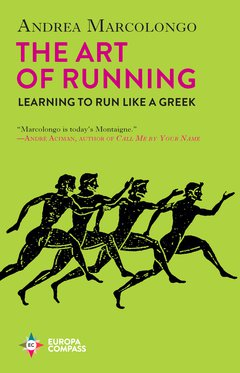
Buy it here:
Synopsis:
The inspiring story of how one of Europe’s most original and compelling classicist learned to run—and live—like a Greek
Much has changed since the day in 490 BCE when the indefatigable Athenian herald Philippides made his legendary run and delivered to the people of Athens news of their city’s victory over the Persians. One thing, however, hasn’t it is still twenty-five punishing miles over rough terrain from Marathon to the Acropolis.
Each year, all over the world, thousands of professional athletes and millions of amateur enthusiasts replicate Philippides’s enterprise, many running with such gusto that one could be forgiven for thinking the fate of Athens once more hung in the balance.
Why do we run? To what end, all the effort and pain? Wherefore this love of muscle, speed, sweat, of testing one’s limits? The Greeks were the first to ask these questions and to wonder why we choose to measure ourselves in this way against others; they were the first to formulate the adage, mens sana in corpore sano; they were first to interrupt war, work, politics, the daily routine to enjoy public celebrations of athletic prowess. The Greeks invented sport! Sport as something separate from labor or war; activity as an end unto itself and a form of entertainment for others. They were also the first to understand how regular physical activity, victory, and loss connected to our emotional and mental well-being.
As the pandemic entered its second year, despondent, isolated, and apprehensive about the future, the internationally renowned classics scholar and best-selling author Andrea Marcolongo discovered running. After years spent with her head and heart in the books, trying to think like a Greek, she set out to learn how to run like a Greek. In doing so, she not only deepened her understanding of the ancient civilization she has spent decades studying, but also discovered a great deal about herself.
In this spirited, generous, and erudite book, Andrea Marcolongo shares not only her erudition but her own journey to understanding that a healthy body is indeed, and in more ways than one might guess, a healthy mind.
Review:
David Lynch has talked about daydreaming being important to his creativity, and it is important to find a safe space to let your mind wander. In The Art of Running: Learning To Run Like a Greek, Andrea Marcolongo uses running as her safe space to sort out what running means to her and how she is continuing a tradition of running like Pheidippides and his twenty five mile run between Marathon and Athens that famously ended with him collapsing after announcing victory. This act by Pheidippides is the romanticized beginnings of the modern marathon, even though the Greeks themselves had no interest in running this far if it was not for a military reasons. With Marcolongo being a person who fell in love with ancient Greece as an teenager and running as an adult, it only makes sense that these two loves would eventually meet. The Art of Running is Marcologo’s journey in training for a marathon between Marathon and Athens, and she knows the best way for her to stick to training is to write a book along the way.
The book does have many insights into how the Greeks felt about running and althletics in general, but a majority of this book is Marcolongo’s insights into what running brings to her and what she feels like as a woman in her thirties training for her first (and possibly only) marathon. Some of the ideas that she brings up are interesting and honestly motivating for someone like myself who does run but struggles with consistency and with a pace that is growing slower and slower.
One of her observations that really strikes me:
“I don’t know if it’s the clearest sign of growing old, but at a certain point, without warning, the reserves of talent that we once greedily drew on begin to run low. It’s terrifying to find them gone, in short supply, insufficient. Replenishing them through training and dedication, physical and intellectual, is hard but necessary work.” p. 120
Not only is this something that puts a simple concept into words that make sense, it is something that can motivate those who have felt like they have lost a step, not only with running but with every talent. The truth about running is most runners, the largest population who will read a book about running, are in my age group (late forties) and older. When you participate in any sort of race, whether it be a 5k or a marathon, the most competitive categories are the 50s and 60s age groups. These are people who have switched from the talent of youth to discipline and training.
There are not many books on running, mostly because the idea of a book about running is pretty boring. Runners say “My sport is your sport’s punishment”, so many probably feel like a book about running would be punishment as well. Fortunately Andrea Marcolongo writes a book that is more about what athletics means, to her, to the Greeks, and to life in general, than about the day to day sludge of individual runs. Anyone who is a runner should pick this up because it fits well in a small library of motivating running books. Anyone who does not run should pick this up because it is not really about running as much as it is about how finding that safe space to let your mind wander, to connect concepts to one another, and to continue to work your talents even when it is no longer as easy to get results.
I received this book from Europa Editions in exchange for an honest review.




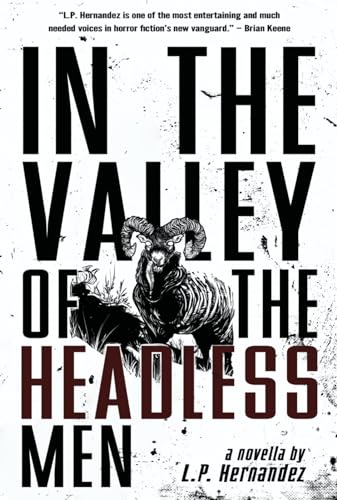
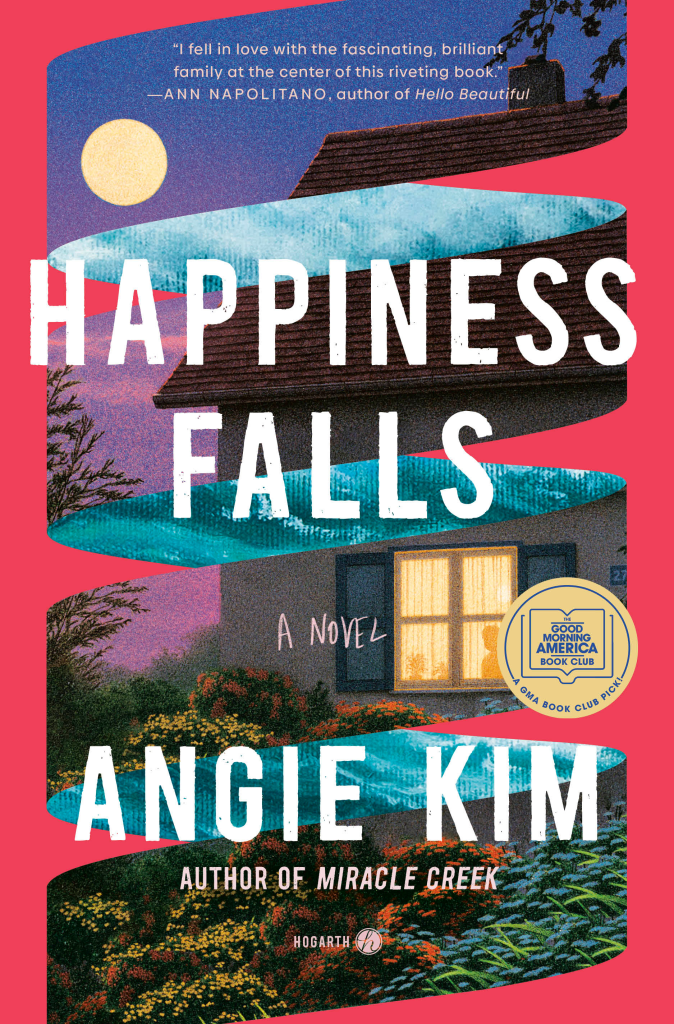
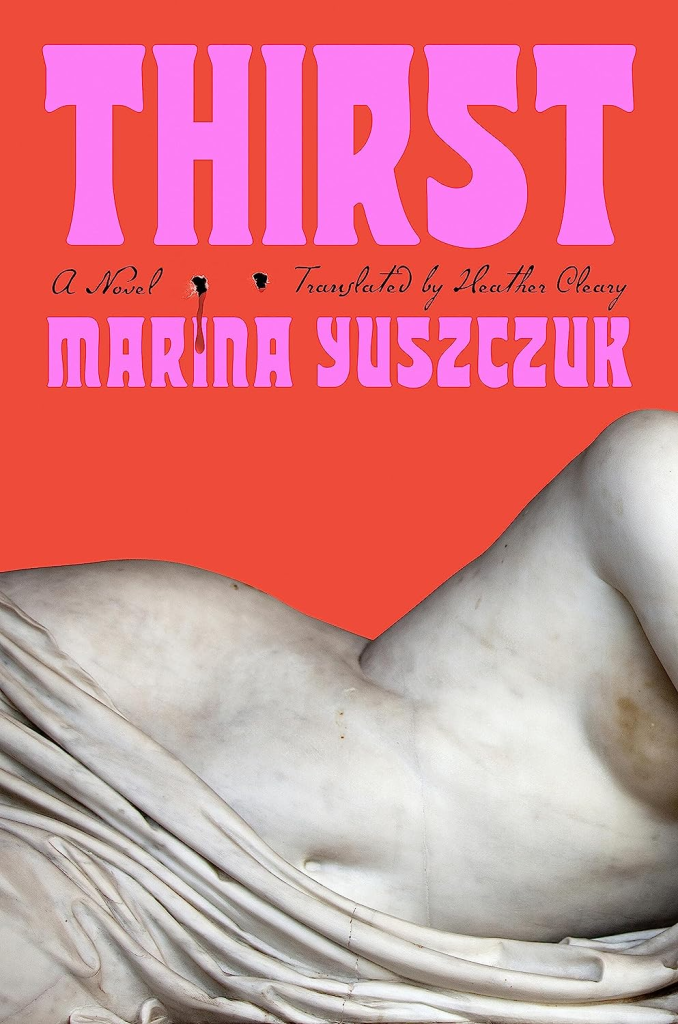

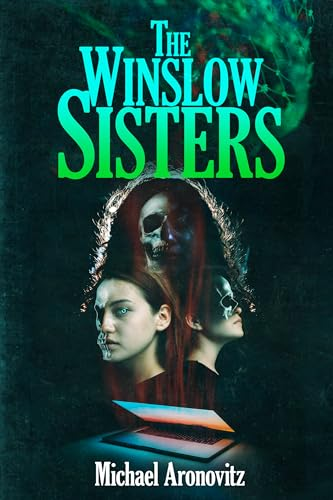
Review: The American Daughters by Maurice Carlos Ruffin
Buy it here:
Amazon, Bookshop
Synopsis:
A gripping historical novel about a spirited young girl who joins a sisterhood of Black women working together to undermine the Confederates—from the award-winning author of We Cast a Shadow
The American Daughters follows Ady, a curious, sharp-witted girl who is enslaved alongside her mother, Sanite to a businessman in the French Quarter of New Orleans. Sanite and her mother Ady are an inseparable duo—taking walks along the river, working together in the fields and spending nights looking up at the stars, dreaming. Ady’s favorite pastime is listening to Sanite’s stories of her families’ origins, their fierce and rebellious nature, and the everlasting love that strengthens their bond.
When mother and daughter are separated, Ady is left hopeless and unmoored, until she stumbles into the Mockingbird Inn and meets Lenore, a free Black woman with whom she becomes fast friends. Lenore invites Ady to join a clandestine society of spies called The Daughters. With the courage instilled in her by Sanite—and help from these strong women—Ady learns how to choose herself. So begins her journey toward liberation and imagining a new future. The American Daughters is a novel of hope and triumph that reminds us what is possible when a community bands together to fight for their right to live free.
Review:
The American Daughters, the second novel and third book by Maurice Carlos Ruffin, is a historical novel about Ady, a slave girl, who lives in a New Orleans and eventually finds kindred spirits in the women who work at The Mockingbird, a club ran by a free woman, Lenore. Ady is introduced by Lenore to a group of women spies who do things to undermine and sabotage the confederacy. Their actions do not stop the confederacy and slave owners from punishing them, but the war that the women wage against the oppressive men and government is one that makes them feel vindicated. Their work is justified for their work, regardless of the consequences.
Ady (sort for Adebimpe) is an easy character to like and cheer for. She is intelligent, strong, and defiant in the face of ugliness and hatefulness. In books about slavery, readers are hard pressed to ever find any sort of compassion toward a slave owner, so it is easy to want Ady and to succeed in everything that she does, whether it be running away into the woods with her mother, Sanite, while as a little girl, or plotting with her spy friends to undermine the confederacy and her owner. We want her to be successful. The danger that she finds herself in does lead to parts of the novel where the tension increases, but most of the time, the things that she is doing feel like things that she should get away with. She is doing the right thing, even with the dangers that it brings.
Maurice Carlos Ruffin has written a novel that is more serious than most of his other stories, but slave stories come with a natural tone of seriousness. He does find the ability to add a bigger story to this novel, one that brings home the social commentary at the center of this book. There are a few parts written in the far future, from historians and family members generations removed, who are using the text of The American Daughters as the true records of what slavery is like. Ruffin is saying that at this moment, we are still close enough to American slavery that there is a strong narrative, but in one hundred and fifty years, the only record we might have left is the stories that have been passed along from the actual slaves themselves. The official narrative will eventually diminish the centuries of slavery in America into a footnote, so it is up to personal stories, memoirs and biographies, and even some fiction, to continue the true narrative of slavery in America. I would have liked more of these cuts to the future throughout the novel and how this story has turned into an important historical document, because this idea is subtle, and it takes the epilogue for this idea to really be solidified. The American Daughters is another great story by Maurice Carlos Ruffin, and even though it is a little more serious in tone than his previous works, his social commentary is just as strong.
I received this as an ARC from NetGalley in exchange for an honest review.